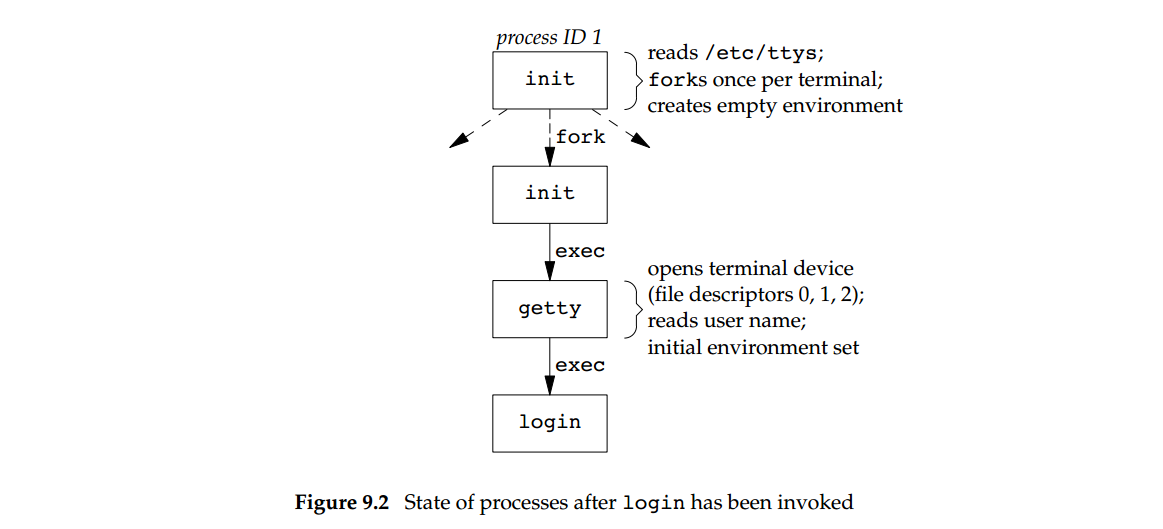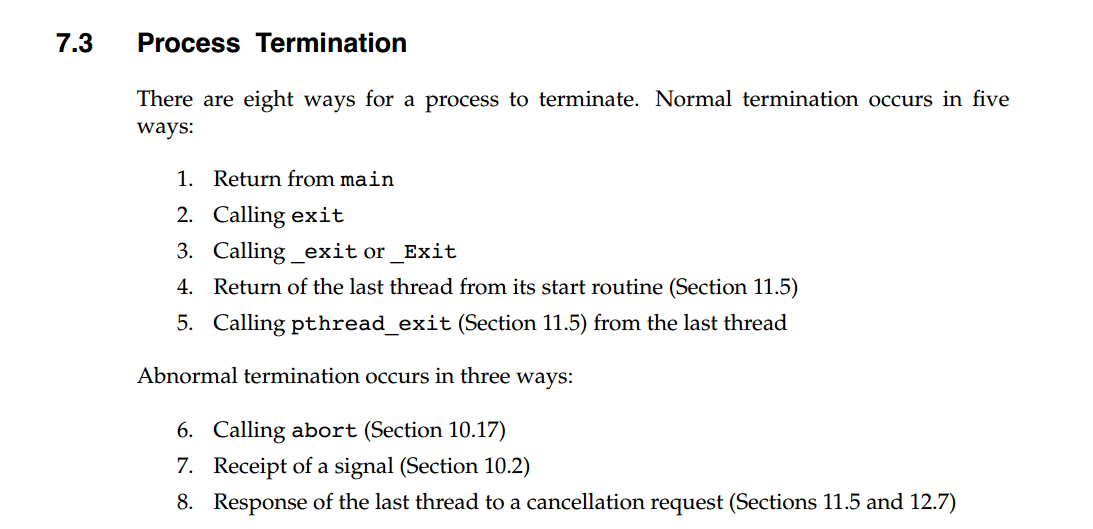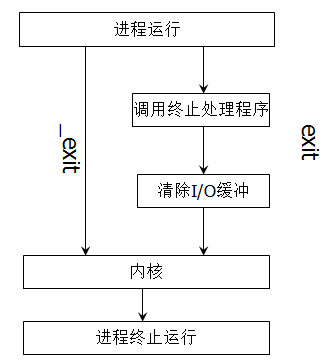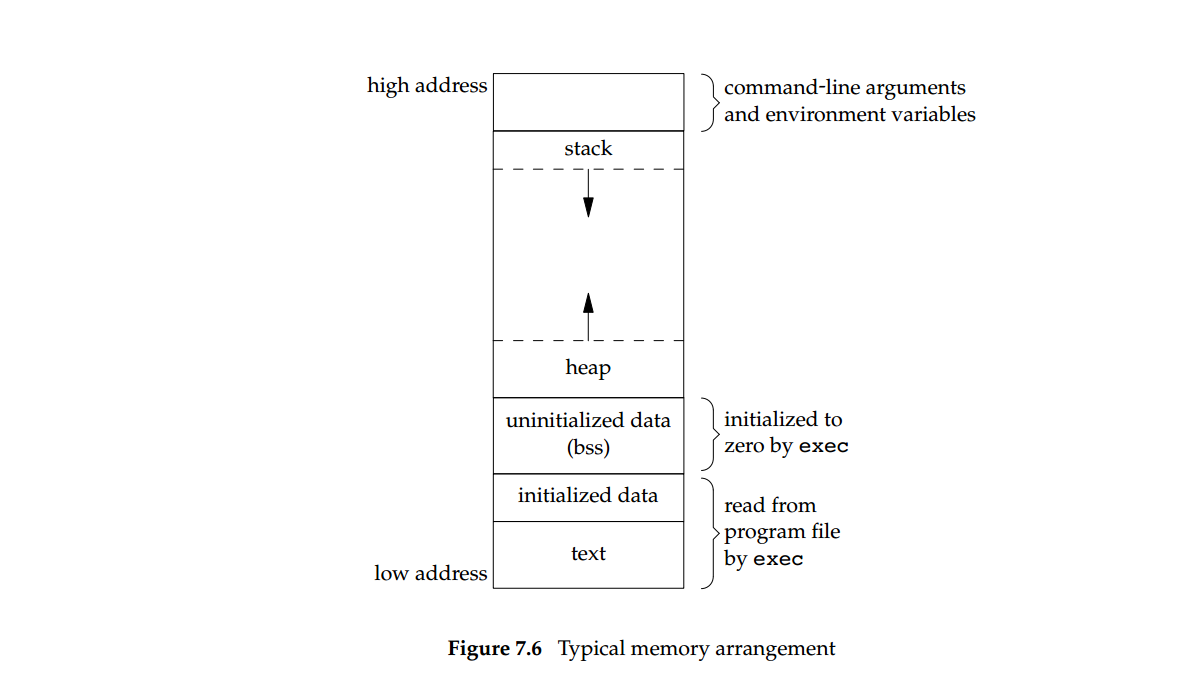【注意】最后更新于 November 29, 2019,文中内容可能已过时,请谨慎使用。
这里主要记录学习和探索过程。来验证正确方法才能有正确的结果。
走神一会
你所寻找的东西正在寻找你。-鲁米
What you seek is seeking you.
你生来就有一对翅膀。为什么更喜欢一边爬行一边生活?– 鲁米
You were born with wings. Why prefer to crawl through life?
你不是一滴水在海洋中。你是整个海洋在一滴水中。 – 鲁米
You are not a drop in the ocean. You are the entire ocean in a drop.
在你的提问中寻找答案。-鲁米
Look for the answer inside your question.
book

知识图谱
线程
1. 线程的创建过程
pthread_atfork 函数解决多线程多进程死锁问题
With pthread_atfork, we can install up to three functions to help clean up the
locks.
pthread_atfork()在fork()之前调用。
当调用fork时,内部创建子进程前在父进程中会调用prepare,内部创建子进程成功后,父进程会调用parent ,子进程会调用child。
2. 线程的销毁过程
问题 1 什么场景下使用 join ,什么场景下使用 detach ?
Detaching is not a no-no. It’s legal, a lot of high-quality production code have it,
it just might be dangerous. (一方面提倡使用,一方面说危险,哪里危险了,给出三个例子,因为工作线程无论是简单业务逻辑还是异步处理 执行时间在多线程环境下是不可预估的。一切无法控制的,这多线程危险)
So, think carefully when choosing between join and detach.
Whether an std::thread object is or is not joinable determines whether you may or may not join or detach it.
it up to you
it up to you
(我哪里知道??)
小王:第一次尝试回答
-
If at any point the object is joined (by calling *join()*), the parent thread will wait there for the child to complete its job.
-
If it’s detached (by calling *detach()*), it will keep running in the background and the parent thread won’t wait for it to finish.
老王:不懂 不懂 不懂,我问什么时候该设置 join /detach,什么时候不该什么设置join /detach,
你回答用法.不符合题目要求,你考虑下main函数是如何离开的?
This answer is aimed at answering question in the title( when should std:🧵:detach should be used? ), rather than explaining the difference between join and detach.
小王一头雾水,表示 还能怎么分析,没有思路,
man pthread_detach
http://man7.org/linux/man-pages/man3/pthread_detach.3.html

The detached attribute merely determines the behavior of the system when the thread terminates; it does not prevent the thread from being terminated
if the process terminates using exit(3) (or equivalently, if the main thread returns).
一个线程异常,整个进程退出(正确)
一个线程退出,整个进程结束(错误)
主进程退出,整个进程结束(正确)
main函数都退出了,整个进程空间都消失了,不管什么样方式进程 都会别被销毁的。
为工作线程执行时间长短不确定(即使非阻塞,或者sleep 来控制,还有cpu调度因素考虑)
这就是我理解必须通过join方式阻塞main线程。
man pthread_exit
在notes 最重要的一句话
1
2
|
To allow other threads to continue execution,
the main thread should terminate by calling pthread_exit() rather than exit(3).
|
解释:
-
pthread_exit 作用就是只终止调用线程,就是自己(这个我知道了,exit就是推出)
-
pthread_exit 只清楚自己的数据(这个我知道了,exit就是推出)
-
pthread_exit 不清理全局共享的数据,通过atexit()方式注册的销毁数据方式,不被执行(atexit是进程退出执行)
-
如果终止是最后一个线程。真个进程调用exit退出,销毁整个进程。
1
2
3
4
5
6
7
8
9
10
11
12
13
14
15
16
17
18
19
20
21
22
23
24
25
26
27
28
29
30
31
32
33
34
35
36
|
http://man7.org/linux/man-pages/man3/pthread_exit.3.html
NAME
void pthread_exit(void *retval);
DESCRIPTION
The pthread_exit() function terminates the calling thread and returns
a value via retval that (if the thread is joinable) is available to
another thread in the same process that calls pthread_join(3).
Any clean-up handlers established by pthread_cleanup_push(3) that
have not yet been popped, are popped (in the reverse of the order in
which they were pushed) and executed. If the thread has any thread-
specific data, then, after the clean-up handlers have been executed,
the corresponding destructor functions are called, in an unspecified
order.
When a thread terminates, process-shared resources (e.g., mutexes,
condition variables, semaphores, and file descriptors) are not
released, and functions registered using atexit(3) are not called.
After the last thread in a process terminates, the process terminates
as by calling exit(3) with an exit status of zero; thus, process-
shared resources are releas
NOTES
Performing a return from the start function of any thread other than
the main thread results in an implicit call to pthread_exit(), using
the function's return value as the thread's exit status.
To allow other threads to continue execution, the main thread should
terminate by calling pthread_exit() rather than exit(3).
The value pointed to by retval should not be located on the calling
thread's stack, since the contents of that stack are undefined after
the thread terminates.
|
man exit
1
2
3
4
5
6
7
8
9
10
11
12
13
14
15
16
17
18
19
20
21
22
23
24
25
26
27
28
29
30
31
32
33
34
35
36
37
38
39
40
41
42
43
44
45
46
|
exit - cause normal process termination
The exit() function causes normal process termination and the value
of status & 0377 is returned to the parent (see wait(2)).
看进程的销毁图片
All functions registered with atexit(3) and on_exit(3) are called, in
the reverse order of their registration.
NOTE
进程销毁 上下都要打点
After exit(), the exit status must be transmitted to the parent
process. There are three cases:
· If the parent has set SA_NOCLDWAIT, or has set the SIGCHLD handler
to SIG_IGN, the status is discarded and the child dies
immediately.
· If the parent was waiting on the child, it is notified of the exit
status and the child dies immediately.
· Otherwise, the child becomes a "zombie" process: most of the
process resources are recycled, but a slot containing minimal
information about the child process (termination status, resource
usage statistics) is retained in process table. This allows the
parent to subsequently use waitpid(2) (or similar) to learn the
termination status of the child; at that point the zombie process
slot is released.
If the implementation supports the SIGCHLD signal, this signal is
sent to the parent. If the parent has set SA_NOCLDWAIT, it is
undefined whether a SIGCHLD signal is sent.
Signals sent to other processes
If the exiting process is a session leader and its controlling
terminal is the controlling terminal of the session, then each
process in the foreground process group of this controlling terminal
is sent a SIGHUP signal, and the terminal is disassociated from this
session, allowing it to be acquired by a new controlling process.
If the exit of the process causes a process group to become orphaned,
and if any member of the newly orphaned process group is stopped,
then a SIGHUP signal followed by a SIGCONT signal will be sent to
each process in this process group. See setpgid(2) for an
explanation of orphaned process groups.
|
http://man7.org/linux/man-pages/man3/pthread_detach.3.html
https://www.youtube.com/watch?v=q3-5sDe6lzg
https://stackoverflow.com/questions/6042970/pthread-detach-question
https://medium.com/@vgasparyan1995/let-me-detach-those-threads-for-you-2de014b26394
3.线程安全
陈咬金的三板斧 来了
第一斧:技术本质是什么?
第二斧:考虑哪些问题?
第三斧:如何使用?
第一斧:技术本质是什么?
第二斧:考虑哪些问题?
第三斧:如何使用?
进程
一. 进程创建方式
- Linux进程创建: 通过fork()系统调用创建进程
- Linux用户级线程创建:通过pthread库中的pthread_create()创建线程
- Linux内核线程创建: 通过kthread_create()
fork, vfork, clone根据不同参数调用do_fork
- pthread_create: flags参数为 CLONE_VM, CLONE_FS, CLONE_FILES, CLONE_SIGHAND
- fork: flags参数为 SIGCHLD
- vfork: flags参数为 CLONE_VFORK, CLONE_VM, SIGCHLD
运行应用程序( 由fork / exec对完成 )
启动程序一般都是在命令行中,其实是在与shell打交道,然后shell帮我们启动程序
shell 每次执行指令, 需要 fork 出一个子进程来执行,然后将子进程的镜像替换成目标指令,
这又会用到 exec 函数。比如下面这条简单的指令
putty工具登录

参考
一个小小的 Shell 管道符,内部实现可真不简单!
Linux进程启动过程分析do_execve(可执行程序的加载和运行)
1
2
3
4
5
6
7
8
9
10
11
12
13
14
15
16
17
|
strace ./a.out
execve("./a.out", ["./a.out"], [/* 30 vars */]) = 0
brk(NULL) = 0xd9e000
mmap(NULL, 4096, PROT_READ|PROT_WRITE, MAP_PRIVATE|MAP_ANONYMOUS, -1, 0) = 0x7f52dcaaa000
The exec() family of functions replaces the current process image with a new process image
strace ls
execve("/bin/ls", ["ls"], [/* 29 vars */]) = 0
brk(NULL) = 0x19aa000
mmap(NULL, 4096, PROT_READ|PROT_WRITE, MAP_PRIVATE|MAP_ANONYMOUS, -1, 0) = 0x7fc7e7ad6000
access("/etc/ld.so.preload", R_OK) = -1 ENOENT (No such file or directory)
open("tls/x86_64/libselinux.so.1", O_RDONLY|O_CLOEXEC) = -1 ENOENT (No such file or directory)
open("tls/libselinux.so.1", O_RDONLY|O_CLOEXEC) = -1 ENOENT (No such file or directory)
open("x86_64/libselinux.so.1", O_RDONLY|O_CLOEXEC) = -1 ENOENT (No such file or directory)
open("libselinux.so.1", O_RDONLY|O_CLOEXEC) = -1 ENOENT (No such file or directory)
|
close_on_exec 机制
陈咬金的三板斧 来了

文件描述符(File descriptor)是计算机科学中的一个术语,是一个用于表述指向文件的引用的抽象化概念。
Linux 下文件描述符的统计方法
fork 后,子进程会获得父进程的文件描述符(更具体地说,Linux 下是未设置 CLONE_FILES flag 的系统调用 clone())。
子进程执行 exec 的后,内核不再保留原有的 fdtable,无法再根据文件描述符操作文件
exec 流程
- fork
- 销毁
- 替换
进程/线程 因为存在 Too many open files(端口也是文件) ,造成创建失败
sysctl -a | grep file-max
fs.file-max = 655360
文件描述符标志(即,close-on-exec)为进程和文件描述符所私有。
对这一标志的修改将不会影响同一进程或不同进程中的其他文件描述符
如果对描述符设置了FD_CLOEXEC,在使用execl调用执行的程序里,此描述符将在子进程中会被自动关闭,不能使用了。但是在父进程中仍然可以使用
Linux系统的open函数,其中flags参数可以传入O_CLOEXEC标记,即可自动设置上FD_CLOEXEC标记,但Linux内核版本2.6.23才开始支持此标记。
来源:Nginx文件描述符泄露?浅析FD_CLOEXEC文件描述符标志
1
2
3
4
5
6
7
8
9
10
11
12
13
14
15
16
17
18
19
20
|
TCP:
#ifdef WIN32
SOCKET ss = ::socket(PF_INET, SOCK_STREAM, 0);
#else
SOCKET ss = ::socket(PF_INET, SOCK_STREAM | SOCK_CLOEXEC, 0);
#endif
文件:
int fd = open(“foo.txt”,O_RDONLY);
int flags = fcntl(fd, F_GETFD);
flags |= FD_CLOEXEC;
fcntl(fd, F_SETFD, flags);
int fd = open(“foo.txt”,O_RDONLY | O_CLOEXEC);
O_CLOEXEC (since Linux 2.6.23)
Enable the close-on-exec flag for the new file descriptor.
Specifying this flag permits a program to avoid additional
fcntl(2) F_SETFD operations to set the FD_CLOEXEC flag.
|
因为在UNIX上,最常用的功能之一是进程之间的管道流 - 如果设置了CLOEXEC标志,则不能这样做标准I/O
二、 进程的销毁
陈咬金的三板斧 来了
第一斧:技术本质是什么?
第二斧:解决了什么问题?
第三斧:如何使用?



what-would-you-use-an-exit-handler-
不同语言类比(c/golang/python/java)
python The atexit module defines functions to register and unregister cleanup functions
golang Defer is used to ensure that a function call is performed later in a program’s execution, usually for purposes of cleanup
java hooks

相关问题
- Linux中fork子进程后再exec新程序时文件描述符的问题?
- 关于linux进程间的close-on-exec机制
- LinuxThreads的不足
- TCP listening sockets created without FD_CLOEXEC flag
- 为什么使用execve创建远程shell不会覆盖文件描述符和套接字?
- C 和 Golang 真的有千丝万缕的联系,比如
atexit() 与 defer func(){}








